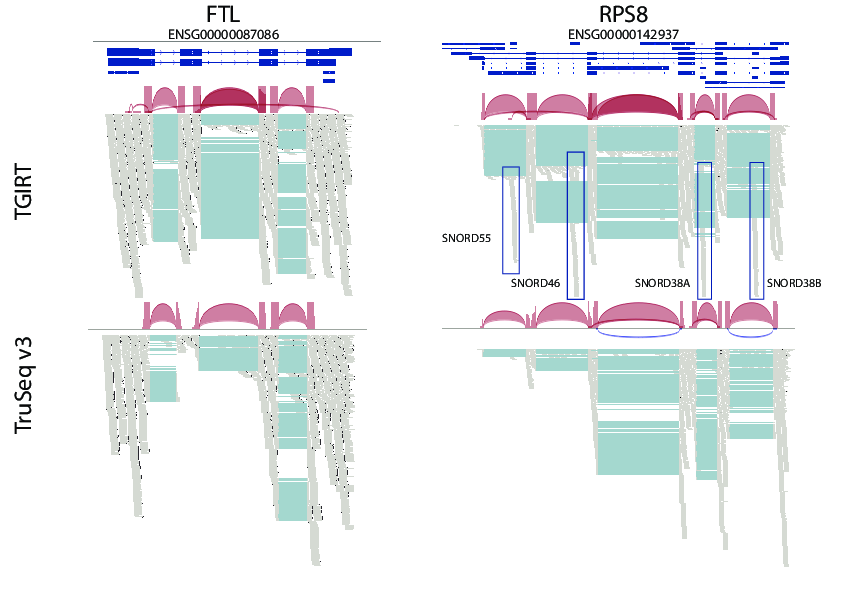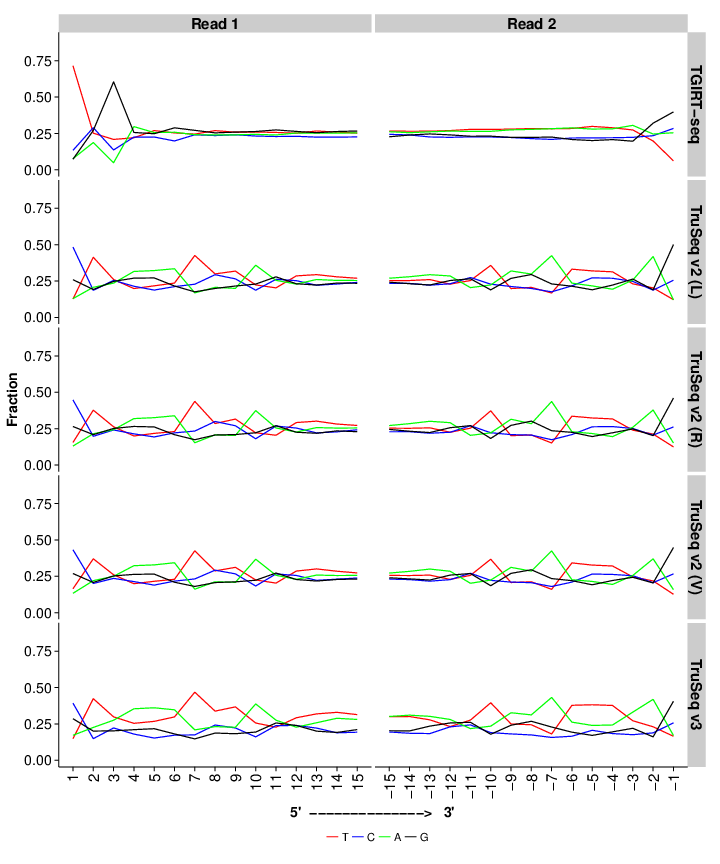I have recently co-authored two publications on TGIRT-seq. The latest one aims on direct comparison between using thermostable group II intron reverse transcriptase for RNA-seq (namely TGIRT-seq) and commonly-used RNA-seq preps (TruSeq v2 and v3), where TruSeq v3 is strand specific RNA-seq prep, and TGIRT-seq is by nature has to be strand specific.
Basically what we found is very consistent with what we would expect by sequencing plasma RNA with TGIRT.
First off, TGIRT-seq clones full length structural RNAs as well as protein coding mRNAs. The below IGV is an example of snoRNA embbed between protein coding exons.

Second, TGIRT-seq showed recovered the spike-ins concentration (a) and recapitulate differential expressions accurately (b). In both cases, TGIRT-seq shows similar results compare to TruSeq v2 and has a better performance compare to TruSeq v3.

Third, adaptor attachment is done by end-to-end template switching of TGIRT, TGIRT-seq reduced sampling bias introduced by not-so-random hexamer priming from TruSeq protocols, enabling more comprehensively sampling of transcriptomes. However, there's an mysteric +3 nucleotide G bias on TGIRT-seq, which may be contributed by ligase.

Forth, strand specificity of TGIRT-seq is higher than that of TruSeq v3. 
To conclude, TGIRT-seq can be useful for anyone who do RNA-seq, especially those who need strandeness information such as antisense RNA and structured RNA-seq like tRNA.
+++
Reference
-
Ryan M. Nottingham*, Douglas C. Wu*, Yidan Qin, Jun Yao, Scott Hunicke-Smith, and Alan M. Lambowitz (2016). RNA-seq of human reference RNA samples using a thermostable group II intron reverse transcriptase. RNA. (*contributed equally)
-
Yidan Qin, Jun Yao, Douglas C Wu, Ryan M Nottingham, Sabine Mohr, Scott Hunicke-Smith, Alan M Lambowitz (2016). High-throughput sequencing of human plasma RNA by using thermostable group II intron reverse transcriptases. RNA. Vol. 22, no. 1.